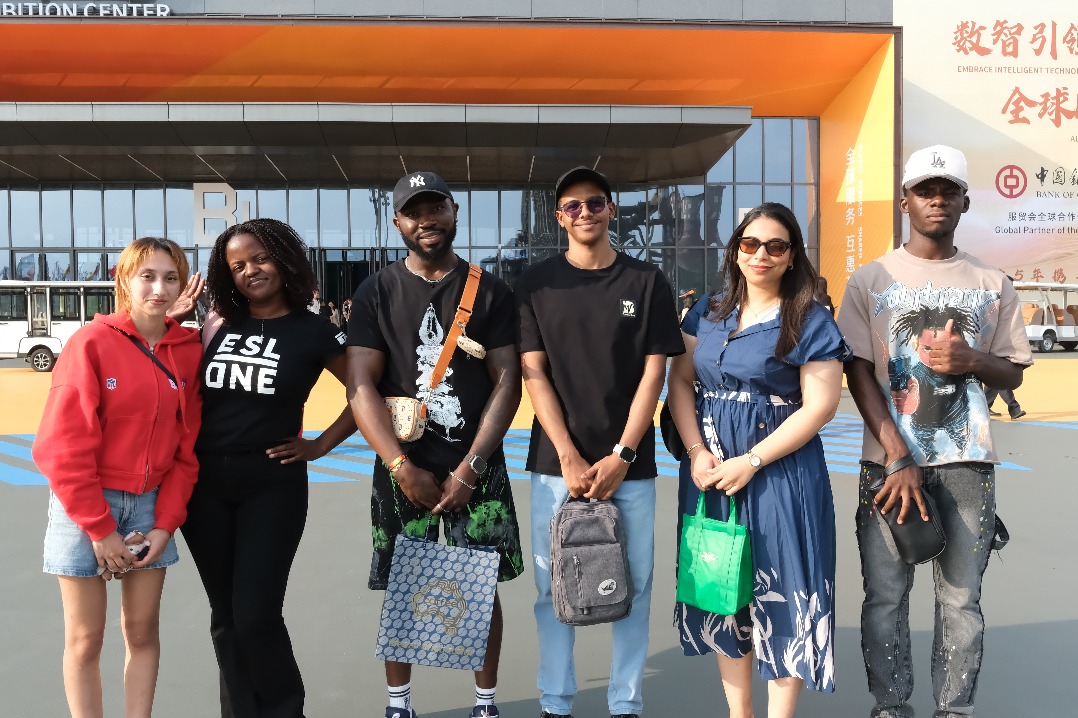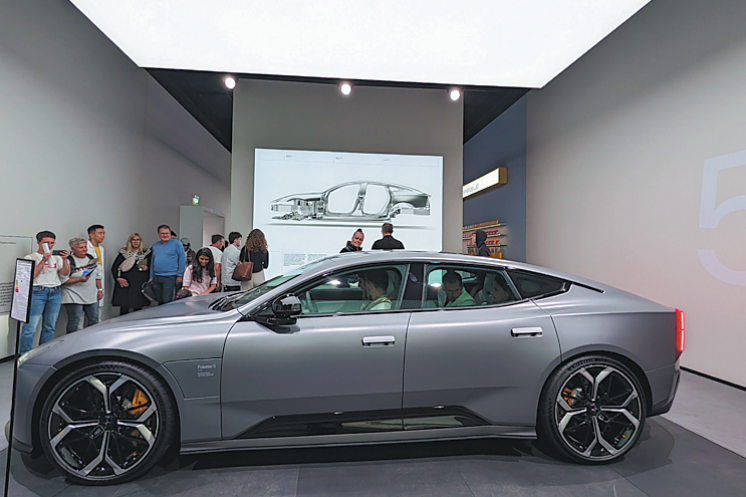Expo helps bolster connectivity with Northeast Asia
Jilin, other provinces broaden business opportunities with neighboring countries


Inside a workshop of Jilin SSK Electromechanical Co in Northeast China in late August, robotic arms moved with precision as workers performed final adjustments on a shipment of machines bound for Russia.
The shipment marked the fourth delivery to Northeast Asia this year by the company, a manufacturer of intelligent poultry slaughtering and deep processing equipment in Siping, Jilin province. From January to July, Jilin SSK's total foreign trade value surged to 31.96 million yuan ($4.48 million), jumping 612.3 percent year-on-year, with exports to countries in the region reaching 17.13 million yuan, Changchun Customs data showed.
Consisting of China, Russia, Mongolia, the Democratic People's Republic of Korea, the Republic of Korea and Japan, Northeast Asia boasts favorable transportation conditions and covers a vast area rich with human, mineral and marine resources, as well as strong industrial capabilities.
"Previously, our products were mainly exported to Southeast Asian and North African countries," said Guo Feng, president of Jilin SSK.
"With the support of the China-Northeast Asia Expo, and the implementation of the Regional Comprehensive Economic Partnership, we now enjoy easier access to other Northeast Asian markets," he said at the company's booth during the 15th edition of the expo, held in Changchun, the capital of Jilin, in August.
Guo pointed out the company's website is in multiple languages — Chinese, English and Russian. It plans to add Korean and Mongolian in November to serve rising demand in Northeast Asia, he added.
Across Northeast Asia, such industrial links are shaping a deeper story of connectivity and growth.
Changchun, one of China's automobile manufacturing hubs, is strengthening cooperation with the city Ulsan in the ROK, home to that country's major carmakers and auto parts suppliers. Machinery businesses in Shenyang, the capital of Northeast China's Liaoning province, are working in tandem with Japan's robotics hub in Nagoya.
Ports in Dalian, Liaoning, are bolstering seamless connections with Vladivostok in Russia, as well as Japan's Otaru, Tokyo and Yokohama, to facilitate trade flows of industrial goods, daily necessities, seafood and other types of commodities.
With minerals from Mongolia, semiconductor products from the ROK, industrial products from Japan, and Jilin's agricultural exports, the region's business map is becoming increasingly interwoven — offering companies new and abundant opportunities to expand.
"China and Northeast Asian countries have deepened strategic alignment and cooperation in recent years, with supply chains becoming more integrated," said Li Xingqian, vice-chairman of the China Council for the Promotion of International Trade.
Li said that while traditional industries anchor the economy, rising cooperation in emerging sectors is driving new momentum for regional growth.
Trade between China and the five other Northeast Asian countries amounted to $901.6 billion in 2024, up 1.6 percent year-on-year, accounting for nearly 15 percent of China's total foreign trade. China has maintained its position as the largest trading partner for all the five countries, with the ROK and Japan ranking as its second — and third-largest trading partners, respectively, according to statistics from the Ministry of Commerce.
Two-way investment between China and the five countries exceeded $7 billion last year, with cooperation expanding into emerging fields, including digital economy, green development, advanced manufacturing and modern services.
Nyam-osor Uchral, Mongolia's first deputy prime minister and minister of economy and development, said the expo plays a key role in advancing multilateral cooperation in Northeast Asia, driving regional integration, fostering mutual understanding and boosting broader collaboration.
"We will expand trade volumes with other countries in the region, while diversifying product categories, optimizing the trade structure, developing value-added supply chains, and increasing both the quantity and variety of non-mineral exports," he said.
Roh Keon-ki, deputy minister for trade negotiations at the ROK's Ministry of Trade, Industry and Energy, said that Jilin is a key node for ROK-China exchanges.
Jilin, once an industrial base, is now a leading province in the nation's automotive and rail transportation industries, and is growing into a regional innovation hub by spearheading high-quality development and promoting digital and green transformation.
Amid shared challenges, including sluggish global economic growth, Roh urged countries to join hands in sharing experience and resources, expanding cooperation for inclusive growth and common prosperity, building a predictable trade and investment environment, and exploring innovative solutions for digital transformation and carbon neutrality.
























